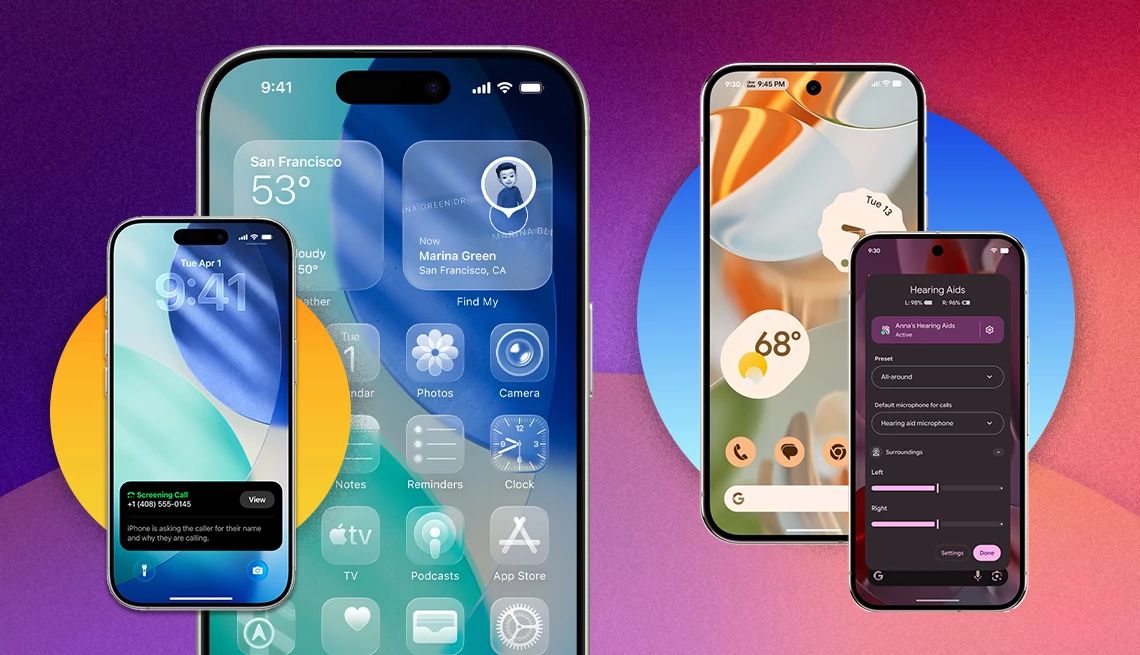AARP Hearing Center


In this story
No budget? No problem • Small debut in July • What’s new for iPhones •
What’s new for Androids
Your budget is taxed, and you’re in no rush to replace your fully functioning but long-in-the-tooth smartphone — even if the fancy and expensive new handsets likely to show up in the fall are tempting.
While manufacturers haven’t revealed any new hardware yet, you’ll still be able to add features, some built around artificial intelligence (AI), to freshen up your aging iPhone or Android device. Both Apple and Google unveiled free software updates at recent conferences for developers.
Google is already rolling out the latest version of its mobile operating system, Android 16. Its Pixel customers are first in line, and other Android devices will be added later in the year.
When you can try iOS 26
At its annual Worldwide Developers Conference, which began Monday, Apple broke with tradition by naming the next major version of its operating system for iPhone iOS 26. It chose digits based on the upcoming year rather than what would have been next in line numerically, with iOS 19 following iOS 18.
The public will be able to test prerelease beta versions of iOS 26 in July, with a formal release in fall, almost certainly timed with the arrival of new phones. Some enhancements will come to models dating back to 2019’s iPhone 11, though newer features that rely on the Apple Intelligence AI technology will require an iPhone 15 Pro, iPhone 15 Pro Max or iPhone 16 models.
Gemini gets most favored nation status as the AI to lean on in Android 16.
More people age 50 and older have Android devices instead of iPhones — 57 percent to 43 percent, Recon Analytics research reports. People younger than 50 go nearly the opposite direction: iPhones are preferred, 52 percent to 48 percent.
Here’s a look at some features that may appeal to older users, starting with iPhones.
What’s new in iOS 26
Like looking through glass. Design is always in the eyes of the beholder. Apple is adopting a fluid and translucent design scheme in iOS 26 called Liquid Glass, which makes app icons, alerts, lock screen widgets and other elements transparent.
This expressive looking-through-glass aesthetic extends across Apple’s hardware line, meaning the iPad, Mac, Apple Watch, Apple TV and Vision Pro headset as well as iPhone. It automatically adapts to whether a display is in light or dark mode.
Early reactions from the design community have been mixed, with some concerned about readability issues, especially for people with low vision.
Screening calls and messages. We all get unwanted spam calls and messages. Apple is adding a Call Screening feature that promises to help you determine whether an incoming call is being sent by someone you want to hear from.


































































More From AARP
What's a Digital Vault; Do I Need One?
Store important documents securely in the cloud.
What to Look for in a Smartphone
Affordable smartphones can offer good quality and features
Recover Deleted Smartphone Photos
Your pictures aren’t really gone, at least not right now